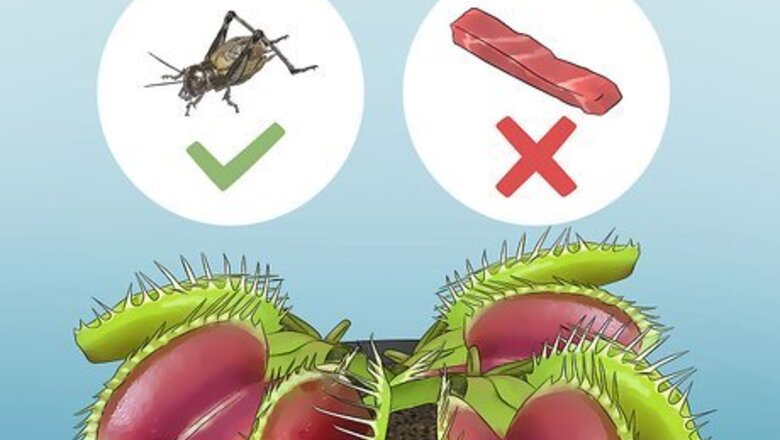
views
Feeding Carnivorous Plants
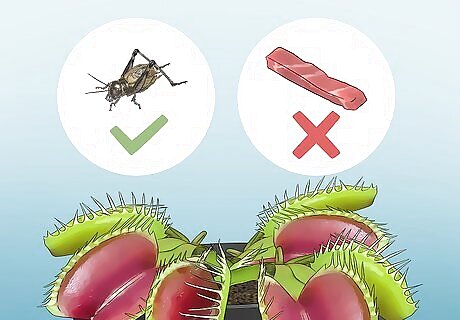
Only feed bugs to your carnivorous plants. Do not feed any meats intended for human consumption, or anything other than bugs. It is astonishing how many well-intended but clueless garden books and websites tell folks to offer small pieces of meat, usually hamburger, to their Venus flytraps. However, these traps are only designed to process bugs. Unsuitable foods may not kill the plant outright, but these items will kill every single trap they are placed into. Choose the bugs carefully. It is best to select small bugs that are about 1/3 the size of the traps, otherwise the carnivorous plant could become overwhelmed. You can use live or dead bugs to feed these plants. However, some carnivorous plants like Venus flytraps will only eat live bugs unless otherwise motivated.
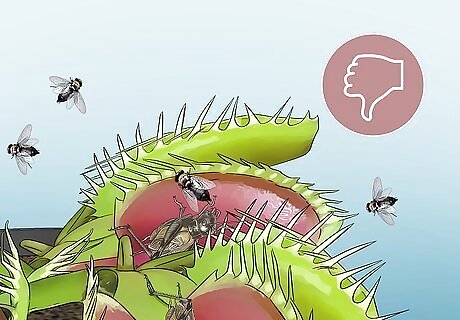
Don't overwhelm the trap with food. Each sticky trap on a Venus flytrap can only process so many bugs before it turns black and dies off.
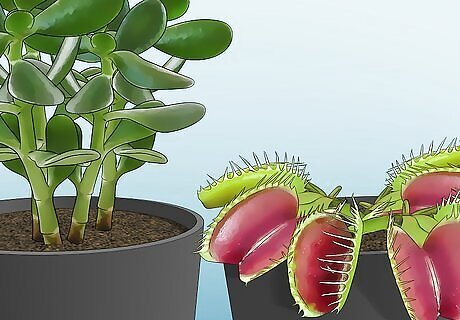
Place your carnivorous plant near other plants with pest problems. A natural, hands-off way of feeding carnivorous plants is by placing them around other garden specimens with insect problems. Gardeners should keep in mind that this technique won’t get rid of all the bugs on the other plants, but it may work as a control method.
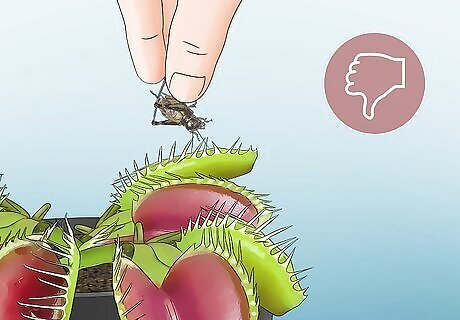
Understand that most carnivorous plants don't need to be hand-fed. Even houseplants do not generally have to be fed. As much as every homeowner hates to admit it, there are always the occasional bugs that get in and really, that’s about all the plant needs to be happy.
Caring for Carnivorous Plants
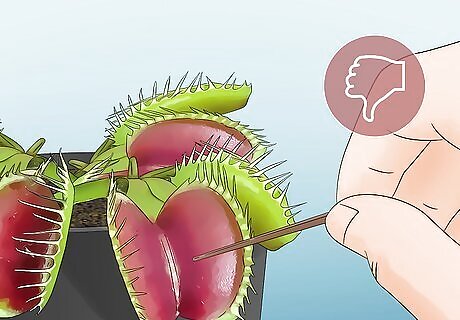
Avoid triggering the flytraps unnecessarily. Gardeners are also advised against triggering the traps on their Venus flytraps, because these traps only open and shut a set amount of times before they fall off. This can waste valuable plant energy.
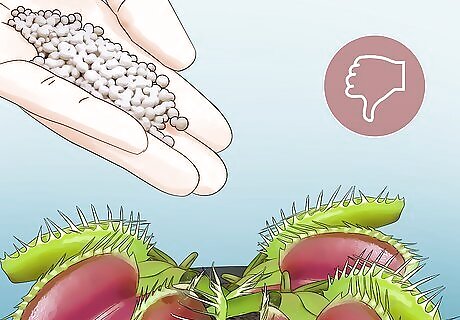
Don't fertilize your carnivorous plants. Carnivorous plants such as sundews (Drosera species), butterworts (Pinguicula species), Venus flytraps, pitcher plants (Sarracenia species) and tropical pitcher plants (Nepenthes species), as well as the more expensive types, typically grow in damp soils that are devoid of most regular nutrients. This, in turn, led to them adapting by catching prey to fulfill their needs. Therefore, gardeners should avoid feeding fertilizer to their carnivorous plants, unless they are absolutely certain that it will be beneficial.

Flush out any fertilizer with distilled water. If gardeners accidentally get ordinary fertilizer on their plants, they should flush out the specimen with enough distilled water or rainwater that it seeps out the bottom of the pot. Repeat this process several times. There is no guarantee that the plant will be saved, but if it was only exposed to a small amount of fertilizer the chances of success are good.
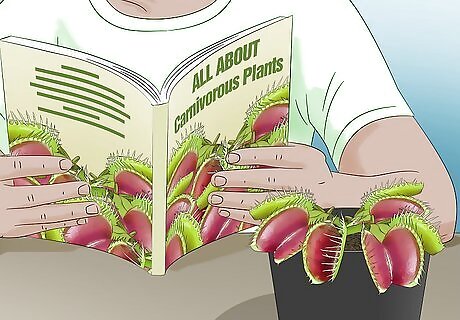
Read up on your specific variety of carnivorous plant. There are a lot more types of carnivorous plants than those discussed here, each of which has its own specific needs and requirements. Therefore, gardeners should do the appropriate research on the specific specimen they are hoping to acquire to ensure that they know how to care for it properly.




















Comments
0 comment